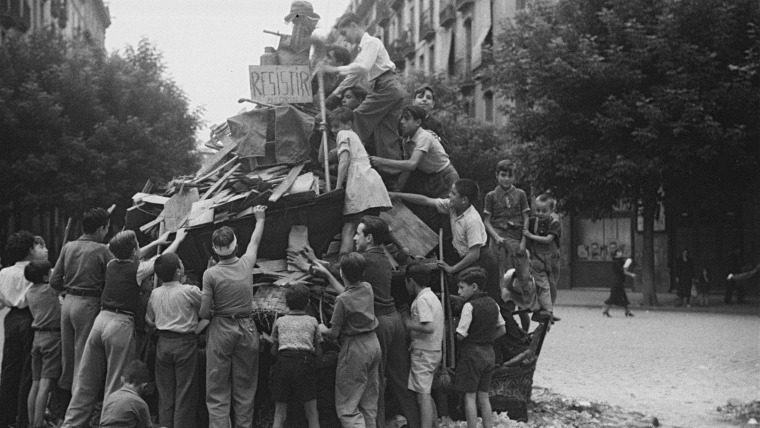The 'Nit de Sant Joan', a festival unchanged in over 500 years
When we say the ‘Nit de Sant Joan’ (St John’s Eve) is one of the city’s oldest festivals, we’re not saying it just for the sake of it: the basic elements – lighting bonfires, throwing firecrackers and filling the public space – have remained unchanged since the Middle Ages. The first documented reference to this midsummer festival dates from the 15th century but the revetlla has had to overcome all kinds of periods and circumstances to survive so many years.
All this is spelled out in a book entitled "La nit de Sant Joan a Barcelona" the most thorough study ever done on the festival and which analyses it from various angles: historical, anthropological, folklore, etc. More specifically, the historian Xavier Cazeneuve decided to study the origins and development of the festival, which he explains in the chapter ‘History of the Sant Joan festival in Barcelona’.
Cazeneuve says that until the 18th century the popular night-time festival, a wild celebration with fires and fireworks, existed alongside the ceremonial one organised by the authorities during the day. Then, following the defeat of 1714, bans were introduced to stop people celebrating the revetlla, lighting bonfires and setting off firecrackers. Despite that, the people of Barcelona kept the tradition alive. By the end of the 19th century all the elements were in place that make up the festival we know today and continue to celebrate on the city’s streets and squares.
The history chapter ends with some very interesting conclusions, for example, that Sant Joan is the oldest popular festival in the city. While there are other celebrations, such as Christmas, that precede it, they don’t have the public character that Sant Joan does, because they are celebrated in private, rather than out on the streets. To show how, essentially, it has remained unchanged for over 500 years, the book explains how bonfires, firecrackers, sea bathing and outdoor revelry were the festival’s main features even in the 15th century.
It also highlights how all the institutional attempts to change the festival, by holding organised celebrations, for example, have ended in failure. All they have succeeded in doing is to reinforce the popular element and ensure its survival. Another characteristic feature of Sant Joan night is its chaotic character, with thousands of people on the streets, big bonfires and firecrackers everywhere, although people behave responsibly and there are rarely any incidents or disturbances.
Despite repeated efforts since the 18th century, the authorities have been unable to control the festival. So, after seeing time and again how people ignored the bans, in recent years they have opted to regulate what, in their eyes, could be dangerous and get out of control. Sant Joan may be characterised by a night of unrestrained revelry but life returns to normal the following day.




